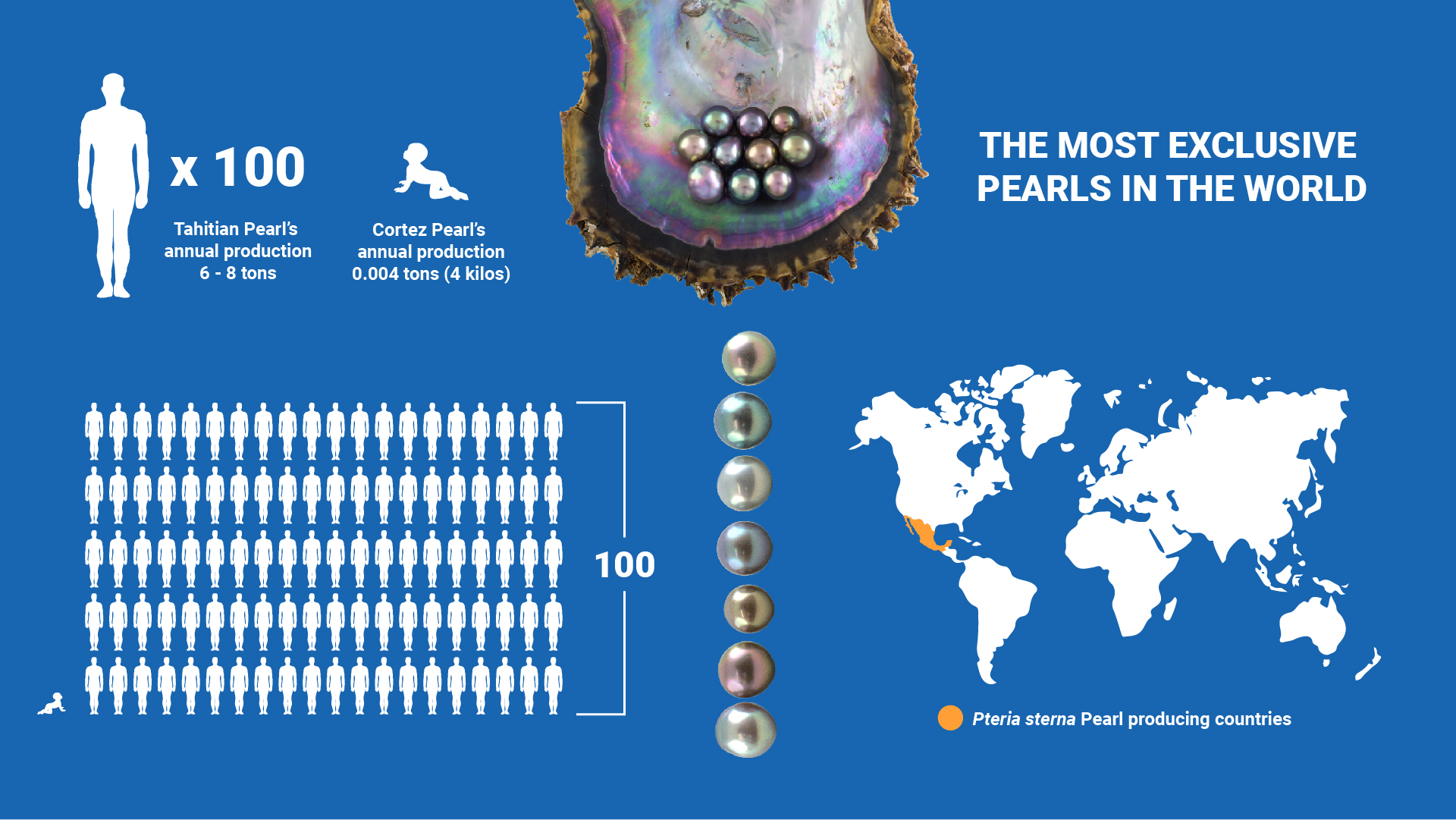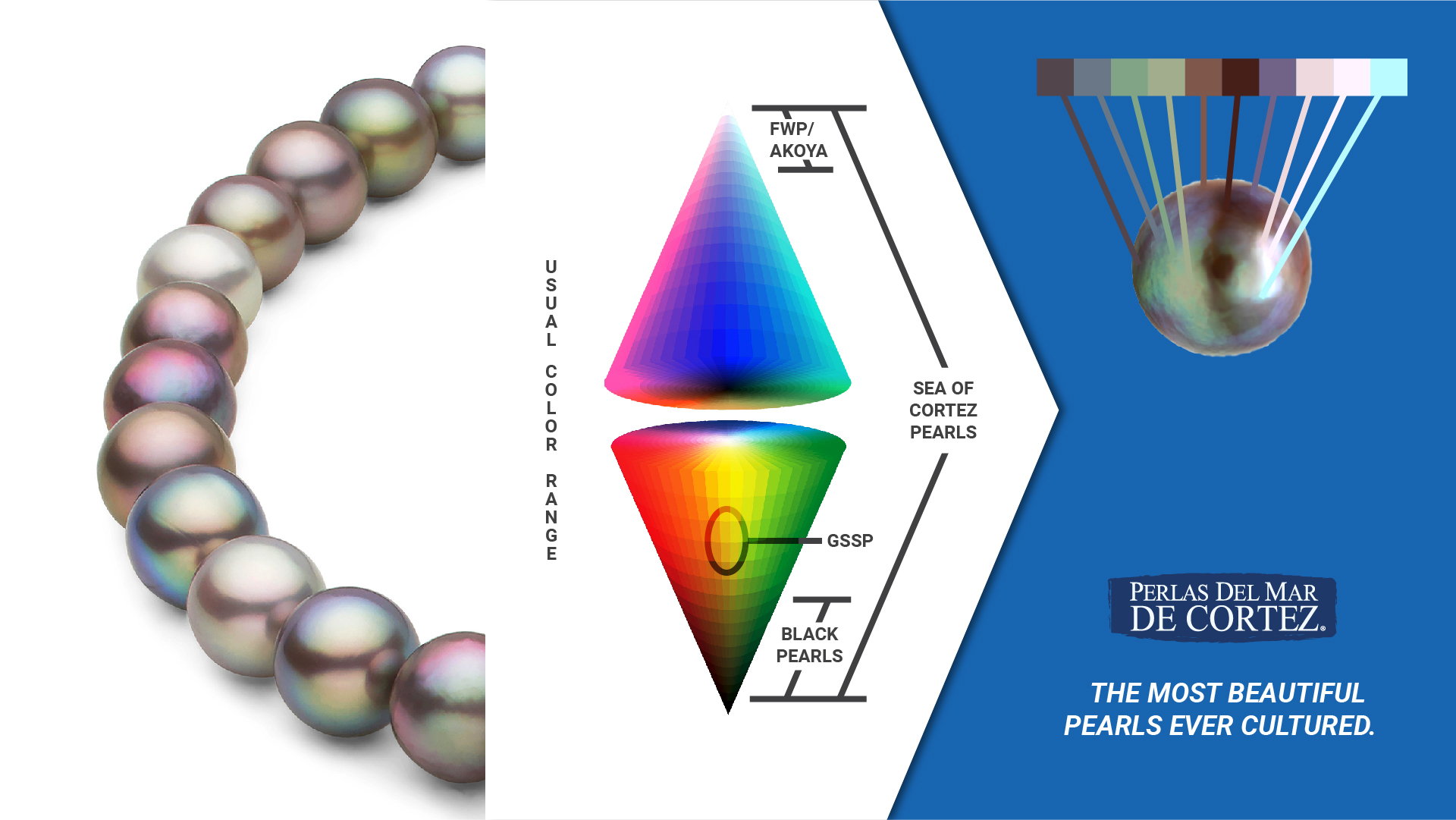What is the meaning or the symbolism of the Pearl?
The Pearl has always been attributed special powers and given its mysterious beauty and its relaxing effect, the most common meanings of the pearl have been Wisdom and Purity. But being the oldest gem of mankind and, after, at least, 8,500 years treasuring pearls, its meaning, has had variations through time.
For the emerging Chinese Empire, the pearl was the symbol of Wisdom and it was originated in the inside of a dragon’s head.
In the Hindu culture, pearls were associated with the Moon and were symbols of Love and Purity. A legend credits its discovery to Krishna who brought it from the depths as a gift for his daughter Pandaia on her wedding day.
In ancient Greece, Pearls were said to be carriers of Love and Beauty, two qualities which lived in the interior of each pearl. The pearl was associated with Aphrodite, who was considered to be the Goddess of Love and Beauty. After all, Aphrodite, just like the pearl, had been born from the Sea. That is why pearls were used in weddings, occasionally sprayed on the bride’s hair, in the form of pearl dust, on the day of the wedding, as a positive augury for a long and pleasant marriage.
In the New Testament we find that pearls were use as metaphors in several quotes, and always referring to a pearl as something holy: “Give not that which is holy unto the dogs, neither cast ye your pearls before swine, lest they trample them under their feet, and turn again and rend you”. (Mat. 7:6)
During the Roman Empire, pearls were greatly appreciated and represented Prestige and Wealth. There is a tale about a bet at a dinner that can show us how special pearls were to Romans. Cleopatra challenges Marco Antonio, saying that she can give him the most expensive dinner ever and when he accepts, Cleopatra grabs one of her pearl earrings (it was said each pearl was worth 10 million sesterces), and dissolves it in her glass of wine and drinks it, winning the bet. You can read another account of this, the most celebrated banquet in literature here
In the Hindu culture, pearls were associated with the Moon and were symbols of Love and Purity. A legend credits its discovery to Krishna who brought it from the depths as a gift for his daughter Pandaia on her wedding day.
In ancient Greece, Pearls were said to be carriers of Love and Beauty, two qualities which lived in the interior of each pearl. The pearl was associated with Aphrodite, who was considered to be the Goddess of Love and Beauty. After all, Aphrodite, just like the pearl, had been born from the Sea. That is why pearls were used in weddings, occasionally sprayed on the bride’s hair, in the form of pearl dust, on the day of the wedding, as a positive augury for a long and pleasant marriage.
In the New Testament we find that pearls were use as metaphors in several quotes, and always referring to a pearl as something holy: “Give not that which is holy unto the dogs, neither cast ye your pearls before swine, lest they trample them under their feet, and turn again and rend you”. (Mat. 7:6)
During the Roman Empire, pearls were greatly appreciated and represented Prestige and Wealth. There is a tale about a bet at a dinner that can show us how special pearls were to Romans. Cleopatra challenges Marco Antonio, saying that she can give him the most expensive dinner ever and when he accepts, Cleopatra grabs one of her pearl earrings (it was said each pearl was worth 10 million sesterces), and dissolves it in her glass of wine and drinks it, winning the bet. You can read another account of this, the most celebrated banquet in literature here
We examined the possibility of dissolving a pearl in a glass of wine (or vinegar of wine), this was done several years back, and you can see the results of Douglas’ video below:
Play Video
The commerce of pearls in Mexico goes farther back than the Pre-Columbian Era, when Maya and Mexica long-distance travelling merchants (the famous “Pochteca”) surveyed their empires seeking for magnificent pearls; these pearls were gifts for rulers and Gods. The Mayans left some evidence of the great appreciation they had for pearls, leaving them on the mortuary offerings of both Pakal´s “El Grande” and the Red Queen “Tzákbu Ajaw” at Palenque.
Today, the Pearl is a metaphor of resiliency, of overcoming a situation. This new meaning emerges from the understanding of the pearl as a natural creation that happens when the pearl oyster defends itself from a parasite’s attack.
Collar de perlas de la Tumba VII de Monte Albán en el museo de sitio. Foto de D. McLaurin.
Pearls have also been associated with tears. Who has not heard that wearing pearls at a wedding is bad luck, since pearls are tears? Well, lie! That legend is false since the mythological meaning is the opposite, Greek mythology mentions that pearls symbolize tears, but tears of happiness! Since the first pearls were the tears of joy of Aphrodite, goddess of Love and Fertility. In more recent times, María Félix, a diva of Mexican cinema, created a new version of pearls and tears, they asked her if she was not afraid to wear pearls. Maria Aren’t you afraid to wear those pearls? … Pearls bring tears. Yes, when they are false like yours, because mine give me enormous pleasure! Today, the pearl is a metaphor for resilience, for overcoming an adverse state or situation. This new meaning is based on the understanding that the natural pearl originates when the pearl oyster defends itself from the attack of a parasite. Eggs are left behind by this parasite, and the oyster faces the possibility of becoming live food for the parasite larvae, unless it begins immediately with the nacre coating around the eggs. To learn, in a formal way, about Gems, look to the IGARM Gemological Institute.
Pearl necklace from Tomb VII of Monte Alban in the site museum. Photo by D. McLaurin.
Does the pearl form when a grain of sand enters the oyster?
The main cause of the formation of natural pearls is the attack of parasites that reach the oyster and deposit small eggs from which the larvae of the parasite would hatch, which would eat the tissues of the oyster until it died, and then, the parasites would go into their free lifestyle in which they swim in search of new victims. Fortunately, oysters have a defensive mechanism that consists of covering the offending agent with nacre, in this case, the group of eggs. At the Sea of Cortez® Pearl Farm we have found and videotaped evidence of parasites that pierce the shell and cause the formation of natural pearls. We invite you to see it here. The audio is in Spanish, you may want to take a deeper look into the subject going to: How Natural Pearls are Really Created: From the Myth of the Grain of Sand to the reality of the Pearl Sac Theory
Play Video
What care should be taken with pearls?
To keep the beauty and integrity of your pearl it is important to keep it clean. For this, we recommend the use of a soft cotton cloth previously moistened. Pearls should be protected from chemical products such as perfume, hair spray or pool chlorine. Read the complete list of recommendations on our page: Care of My Pearl.
What gives its value to a Pearl?
In a general way, the Pearl, just like any gem, derives its value, mainly, from three aspects: 1) Beauty, that it be attractive and pleasing to the sight; 2) Rarity, that it be something uncommon; and 3) Durability, which is why the nacre thickness is important.
If you want to learn more about how Size, Luster, Orient/Overtone, Shape and Skin purity influence the value of a cultured pearl, please do not hesitate to take a look on our “Comprehensive Guide to Cultured Pearl Quality”, click here
Also, you can consider visiting the GIA’s page on the value of pearls, you can find it here
Which is the oldest pearl?
For some years the oldest reported Pearl was a 1.7 mm found in a 5 thousand year old grave in UAE, but now we know that the oldest pearls of mankind come from the Sea of Cortez. Those were the results obtained by the INAH team that studied the culture that lived in the Espíritu Santo Island just in front of La Paz bay in Baja California Sur. They came across many different objects such as mother of pearl fishing hooks and stone arrowheads, and among them, the team lead by Harumi Fujita found 14 pearls dated back as long as 8,500 years ago with evidence of manual work like grooves and incisions made on the pearls to use them as ornaments.
The 14 pearls mentioned are from the Panamic pearl oyster (Pinctada mazatlanica) and there is also a non-pearly pearl of chocolate clam (Megapitaria sp.). Of the 14 pearls, the smallest is 3.9 x 3.7 mm and the largest is 11.2 x 11.0 mm. If you are interested in reading more and watching the image, download the book in Spanish of the Covacha Babisuri.
On the other hand, the oldest Pearl Necklace registered is a Persian necklace, from the city of Susa, dating about four centuries before Christ, in which the pearls were secured with gold.
This is a quote from Kunz and Stevenson (The Book of the Pearl: Its History, Art, Science and Industry, it’s first edition is from 1908):
“The remains of a magnificent necklace of pearls and other gems were recently found by J. de Morgan in the sarcophagus of an Achaemenid princess exhumed at Susa or Shushan, the winter residence of the kings of Persia. This necklace, perhaps the most ancient pearl ornament still in existence, dates certainly from not later than the fourth century BC and is now preserved in the Persian Gallery of the Louvre.”
Are the pearls of clams and oysters authentic?
Yes, the pearls that we find in any other mollusc with shell are real, they come out of a natural process and yes, they are authentic. Traditional pearls are those that have nacre, this is due, on the one hand, to having that very special beauty that has attracted humanity for millennia, and on the other, nacreous pearls (the “pearly pearls”) are formed by aragonite crystals, which are the most resistant kind of cristal that calcium carbonate can form.
Non-traditional pearls, those that are not pearly, can be valuable when they present some exceptional feature of size, color, or surface pattern. If they are simply white or are less than 5 mm long, their value is barely anecdotal or didactic.
We invite you to see photos of non-traditional species (some of these are accompanied by the pearls that form in them) so you can see the great amount of interesting possibilities that there are. Follow the link on Non-traditional pearls.





